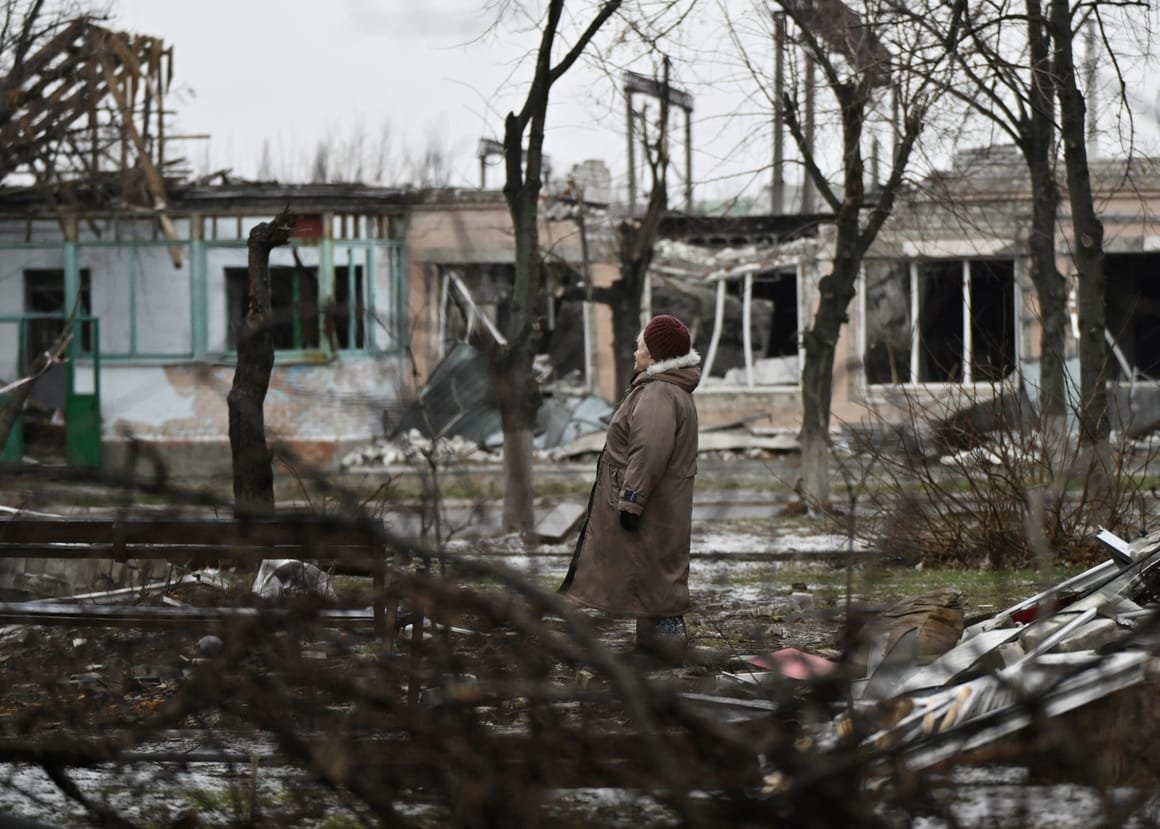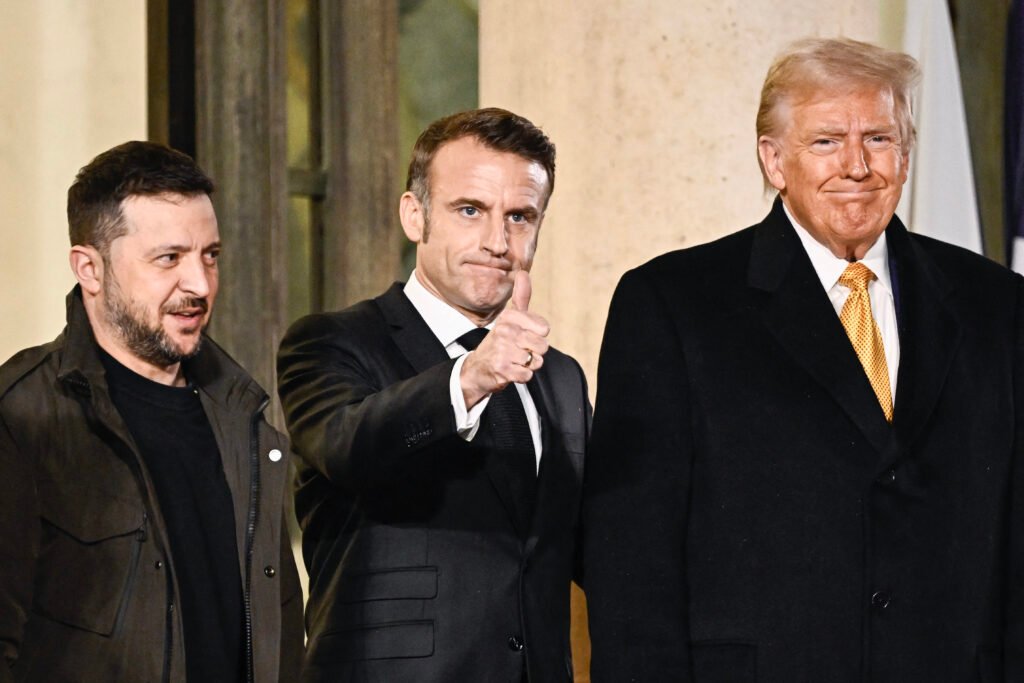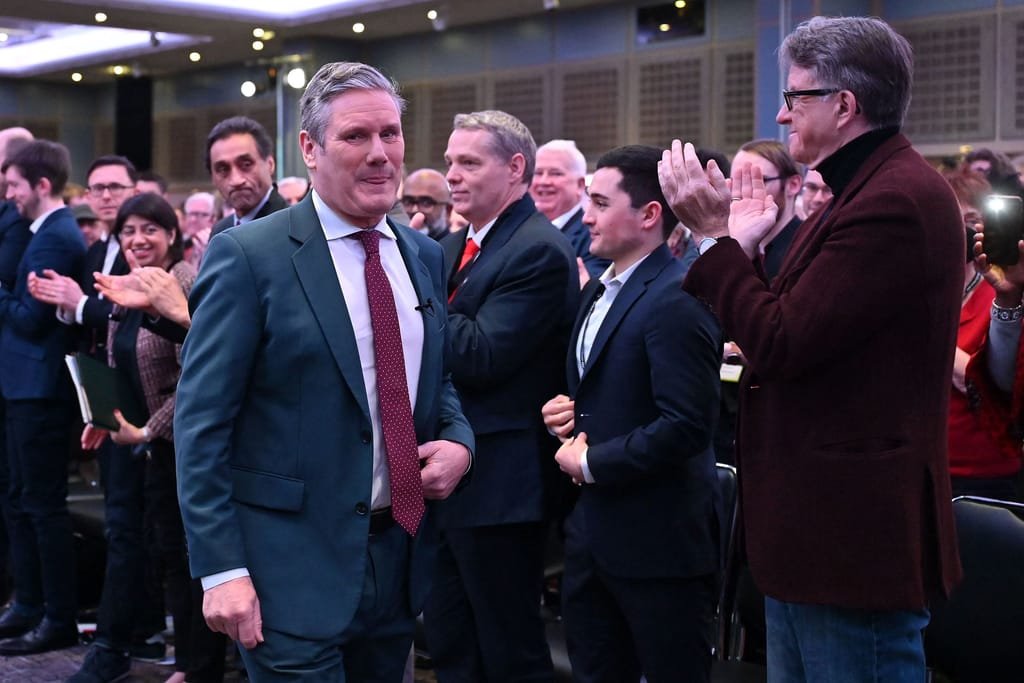Everyone agrees conversations need to move forward, but no one really knows how.

WARSAW — It’s March 2027 and soldiers from a European peacekeeping force are patrolling the demarcation line separating Ukraine from Russian-occupied territory.
The troops are tense.
Suddenly, a loud boom is heard and what looks like a Russian drone comes crashing into one of themany coalition miradors built along the de facto border. One soldier is killed and another wounded. In the hours following the incident, Russia blames Ukraine for shooting down one of its surveillance drones. How Europe responds could plunge the continent back into the throes of war.
This situation is of course fictional, but it’s this type of scenario that military planners across Europe must account for as discussions on deploying peacekeeping troops to Ukraine appear to gather steam.
With United States President Donald Trump promising to end the war in Ukraine fast, even if it means ceding territory to Russia, Europe is scrambling to figure out what role it will play beyond upping its defense spending and supplying weapons to Kyiv. One of the models being discussed is deploying a Europe-led peacekeeping outfit to enforce any potential cease-fire.
Talks about European peacekeepers have started in earnest. But no one has figured out how to move the conversation forward.
« This is the most critical decision that Europeans will have to make in 2025, » said Franz-Stefan Gady, an Austrian former military planner.
British Prime Minister Keir Starmer said his country would play a « full role » in any potential peacekeeping force for Ukraine during a visit to Kyiv last week, while French President Emmanuel Macron has said Europeans need to « build security guarantees » for Ukraine. Lithuanian Foreign Minister Kęstutis Budrys didn’t rule out sending troops to Ukraine as well.
Current negotiations are focusing on putting together a deterrence force of up to 50,000 troops from five to six different European countries, which would police a demarcation line between Ukrainian and Russian forces in case of a cease-fire, according to two European diplomats. According to a separate European security official, the British and the French have already started some preliminary planning.
But few other Western leaders have shown such willingness to put their own soldiers in harm’s way. Ukraine President Volodymyr Zelenskyy told Bloomberg that any peacekeeping force would require U.S. support, but American boots on the ground are unlikely given Trump’s isolationist bent.
Gady said that if Ukraine can’t join NATO, which is unlikely while it is fighting a war, some sort of plan involving peacekeepers is « the only game in town. »
« The consequences of a cease-fire that is not monitored, not backed up [by] European forces, not backed up [by] U.S. forces, will most likely be a succession war, bloodier and more destructive, » he said.
Not an easy conversation
Macron was seemingly alone in February 2024 when he refused to rule out sending Western troops to Ukraine, but a lot can change in a year.
Fast-forward to December, when the French president met then-President-elect Trump and Zelenskyy on the sidelines of the reopening of Notre Dame Cathedral in Paris. Trump reportedly asked Macron and Zelenskyy to present « a credible solution » for Ukraine. Days later, Zelenskyy publicly said that the deployment of European troops was a workable idea.

The prospect of peacekeepers seemed to be at last gathering momentum. Macron, sensing an opportunity, set off for a last-minute visit to Warsawto get the Poles on side.
But talks came to a grinding halt before they could really get started. Polish Prime Minister Donald Tusk told journalists he wanted to « cut short any speculation » on the idea. Macron, in turn, cut short his visit, ostensibly for domestic political purposes.
« It’s stop and go, » said Nicolas Tenzer, a lecturer at Sciences Po in Paris. « There’s a lot of hesitation. Emmanuel Macron has been strongly pushing this idea … and my impression is that talks are continuing with a number of countries including the United Kingdom, the Baltic and Nordic states and possibly the Czechs, » he said.
For Tenzer and other analysts, the hesitations range from the risk of deploying troops to Ukraine, the likelihood of an enduring cease-fire and uncertainty over Trump’s intentions.
But according to two European diplomats who spoke to POLITICO, talks continue notwithstanding.
Gady said one of the models providing inspiration is what former U.S. President Bill Clinton once called the « scariest place on earth »: the demilitarized zone separating North and South Korea, two countries technically still at war with each other.
A top French military officer told POLITICO that whatever framework is chosen, it will likely emerge quickly now that Trump is president and wants « diplomatic victories within his first 100 days. »
However, the officer, who was granted anonymity to speak candidly, warned that there are « a lot of things that could scupper » a peacekeeping plan.
On the sidelines looking in
All this might be for naught. Any peacekeeping force must be agreed upon by Russia and Ukraine, notes François Heisbourg, a senior adviser with the London-based International Institute for Strategic Studies.
« It’s purely hypothetical, » Heisbourg said. « It’s going to be extraordinarily difficult to get Europeans to agree with each other, almost as difficult to get Ukraine and Russia to agree on a resolution [of the conflict]. »

Russian Foreign Minister Sergey Lavrov has slapped down the idea of peacekeepers in Ukraine and was quoted as saying Russia “was not satisfied” with the proposal. For Kyiv, a cease-fire and the deployment of European troops would mean accepting territorial concessions and risk seeing Russia hit Ukraine even harder in a couple of years.
No less certain is what Trump will decide to do. Any plan to deploy European troops to Ukraine — especially NATO member countries — would likely need U.S. backing to be an effective deterrent. That would keep Trump involved in Europe, something he doesn’t want.
Then there’s the matter of the seeming increase in pro-Russian support in Western Europe and what Gady, the former military planner, called « general war fatigue. »
For now, Europe needs to take a long, hard look at its relationship with Ukraine and why it matters to European security, beyond the rhetoric of enduring support for Kyiv, Gady said.
But one thing is certain. At some point in the future, Trump will turn to Europeans and tell them Ukraine is their problem — if he hasn’t already.
Laura Kayali contributed to this report.



